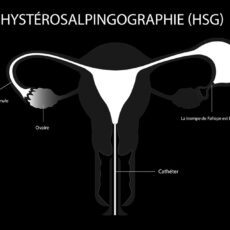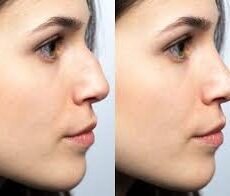Etre comme on le désire tout simplement, grâce à la chirurgie & la médecine esthétique en Tunisie avec MEDHANNIBAL.
Waist Remodeling Without Incision
The pursuit of an ideal body shape, particularly a well-defined waistline, has driven the development of numerous cosmetic procedures. While traditional surgical approaches like rib resection offer significant waist reduction, they are inherently invasive, carrying risks of scarring, pain, and prolonged recovery. This has fueled interest in less invasive techniques for waist remodeling. One promising avenue is ultrasound-guided monocortical fracture, a procedure that aims to reshape the rib cage without the need for large incisions. This document will explore the principles, techniques, potential benefits, risks, and future directions of this innovative approach.
The Anatomy and Biomechanics of the Rib Cage
Understanding the anatomy and biomechanics of the rib cage is crucial for comprehending the rationale behind ultrasound-guided monocortical fracture. The rib cage, comprised of 12 pairs of ribs, protects vital organs and contributes to respiration. The lower ribs, particularly ribs 11 and 12 (floating ribs), and ribs 8-10, are the primary targets for waist remodeling.
- Rib Structure: Each rib consists of a bony portion and a cartilaginous portion that connects to the sternum (except for the floating ribs). The bony portion has an outer layer of compact bone (cortex) and an inner layer of spongy bone (trabecular bone).
- Rib Cage Biomechanics: The rib cage expands and contracts during respiration, facilitated by the elasticity of the costal cartilage and the movement of the intercostal muscles. The shape of the rib cage influences the overall torso contour, and altering the curvature of the lower ribs can contribute to waist reduction.
- Monocortical Fracture Concept: The key principle behind this technique is to create a controlled fracture in the outer layer (cortex) of the rib bone while preserving the inner layer and surrounding tissues. This allows the rib to be reshaped without complete separation, promoting healing and stability.
The Rationale for Non-Incisional Waist Remodeling
The appeal of non-incisional waist remodeling stems from several advantages over traditional surgical methods:
- Minimally Invasive: Absence of large incisions translates to reduced scarring, less pain, and faster recovery.
- Reduced Risk of Complications: Avoiding extensive tissue dissection minimizes the risk of bleeding, infection, and nerve damage.
- Shorter Downtime: Patients can typically return to their normal activities sooner compared to traditional surgery.
- Potential for Reversibility: While not always guaranteed, the possibility of reversing the procedure by allowing the fractured rib to heal in its original position offers a degree of flexibility.
Ultrasound-Guided Monocortical Fracture: Technique and Mechanism
Ultrasound guidance is essential for the precision and safety of this procedure. It allows the surgeon to visualize the rib structure in real-time, ensuring accurate targeting of the outer cortex while minimizing damage to surrounding tissues.
- Pre-operative Planning: High-resolution ultrasound imaging is used to assess the rib anatomy, measure cortical thickness, and identify optimal fracture locations.
- Anesthesia: Local anesthesia is typically administered to numb the treatment area. In some cases, light sedation may be used to enhance patient comfort.
- Ultrasound Guidance: A specialized ultrasound probe is used to visualize the rib in real-time.
- Fracture Creation: A percutaneous instrument, such as a specialized osteotome or a high-intensity focused ultrasound (HIFU) device, is introduced through a small skin puncture. Guided by ultrasound, the instrument is used to create a controlled fracture in the outer cortex of the rib.
- Rib Reshaping: After the monocortical fracture is created, external pressure or a specialized shaping device may be used to gently reshape the rib cage.
- Post-Procedure Stabilization: A compression garment is typically worn for several weeks to provide support and promote healing in the desired contour.
Mechanism of Action
The monocortical fracture weakens the rib at the targeted location, allowing it to be reshaped under controlled pressure. The intact inner cortex provides stability and prevents complete rib separation. Over time, the fracture heals, and the rib consolidates in its new, more contoured shape.
Potential Benefits and Advantages
Ultrasound-guided monocortical fracture offers several potential benefits for individuals seeking waist remodeling:
- Non-Incisional Approach: Eliminates the need for large incisions, minimizing scarring and recovery time.
- Precise Targeting: Ultrasound guidance ensures accurate fracture placement, maximizing the reshaping effect while minimizing damage to surrounding tissues.
- Reduced Pain and Discomfort: Compared to traditional rib resection, this technique is associated with less post-operative pain.
- Faster Recovery: Patients can typically return to their normal activities within a few days to weeks.
- Potential for Reversibility: The possibility of allowing the fractured rib to heal in its original position offers a degree of flexibility.
- Customizable Results: The degree of waist reduction can be tailored to the individual’s desired outcome.
Potential Risks and Complications
While ultrasound-guided monocortical fracture is considered less invasive than traditional surgery, it is not without potential risks and complications:
- Pain and Discomfort: Some degree of pain and discomfort is expected after the procedure.
- Bruising and Swelling: Bruising and swelling are common in the treatment area.
- Infection: Although rare, infection can occur at the puncture site.
- Nerve Damage: There is a risk of nerve damage, which can cause numbness, tingling, or pain.
- Lung Injury: Although unlikely with ultrasound guidance, there is a potential risk of lung injury.
- Asymmetry: The rib cage may not be perfectly symmetrical after the procedure.
- Incomplete Fracture: The fracture may not be complete, resulting in inadequate reshaping.
- Fracture Displacement: The fractured rib may shift out of position, requiring further intervention.
- Delayed Healing: The fracture may take longer to heal than expected.
- Chronic Pain: Chronic pain can develop in some individuals.
- Dissatisfaction with Results: The patient may be unhappy with the aesthetic outcome of the procedure.
- Lack of Long-Term Data: The long-term effects of ultrasound-guided monocortical fracture are not fully understood.
Patient Selection and Pre-Operative Assessment
Careful patient selection is crucial for ensuring the success and safety of ultrasound-guided monocortical fracture. The ideal candidate typically:
- Has realistic expectations about the outcome of the procedure.
- Is in good overall health.
- Has sufficient soft tissue coverage over the ribs.
- Has a stable weight.
- Is a non-smoker.
- Understands the risks and potential complications of the procedure.
Pre-operative assessment typically includes:
- Medical History Review: To identify any underlying health conditions that may increase the risk of complications.
- Physical Examination: To assess the anatomy of the rib cage and torso.
- Ultrasound Imaging: To visualize the rib structure, measure cortical thickness, and identify optimal fracture locations.
- Discussion of Goals and Expectations: To ensure the patient has a clear understanding of the procedure and its potential outcomes.
Post-Operative Care and Follow-Up
Post-operative care is essential for promoting healing and minimizing complications. Typical recommendations include:
- Pain Management: Pain medication will be prescribed to manage discomfort.
- Wound Care: The puncture site must be kept clean and dry.
- Compression Garment: A compression garment must be worn for several weeks to provide support and promote healing.
- Activity Restrictions: Strenuous activities, heavy lifting, and twisting motions should be avoided for several weeks.
- Follow-Up Appointments: Regular follow-up appointments with the surgeon are essential to monitor healing and address any concerns.
Future Directions and Research
Ultrasound-guided monocortical fracture for waist remodeling is a relatively new technique, and further research is needed to optimize the procedure and assess its long-term safety and efficacy. Future research directions include:
- Development of Improved Instruments: Designing specialized instruments for creating precise and controlled monocortical fractures.
- Optimization of Ultrasound Guidance Techniques: Improving ultrasound imaging techniques to enhance visualization of the rib structure and surrounding tissues.
- Investigation of Different Fracture Patterns: Exploring different fracture patterns to achieve optimal reshaping results.
- Evaluation of Long-Term Outcomes: Conducting long-term studies to assess the durability of the results and identify any potential long-term complications.
- Comparison with Other Non-Invasive Techniques: Comparing the effectiveness and safety of ultrasound-guided monocortical fracture with other non-invasive body contouring procedures.
- Development of Patient Selection Criteria: Refining patient selection criteria to identify individuals who are most likely to benefit from the procedure.
Ultrasound-guided monocortical fracture represents a promising approach to non-incisional waist remodeling. By creating controlled fractures in the outer cortex of the ribs under precise ultrasound guidance, this technique offers the potential to reshape the rib cage and achieve a more defined waistline with reduced scarring, pain, and recovery time compared to traditional surgical methods. However, it is important to acknowledge that this procedure is not without risks and complications, and further research is needed to optimize the technique and assess its long-term safety and efficacy.
Careful patient selection, thorough pre-operative assessment, and diligent post-operative care are essential for maximizing the benefits and minimizing the risks of this innovative approach. As technology advances and research progresses, ultrasound-guided monocortical fracture may become an increasingly viable option for individuals seeking non-surgical waist remodeling.




